S.S.
Please Note: Firefox and some other Search Engines may not be suitable
Use Google Chrome for this Web Page to load perfectly!
Please
Note: All ssMaritime and
other related maritime sites are 100% non-commercial and privately owned,
thus ssmaritime is NOT associated with any
shipping company or any other organisation! Although the author has worked and
been involved in the passenger shipping industry for well over 60 years, but
due to his old age and poor health, he was forced to retire. Yet, he has
completed well over 1,550 Classic Liners, Passenger-Cargo Liners as well as
humble converted C3 converted Migrant Liners, which has transported countless
thousands of folk to the new world, as well on vacations’. Amazingly,
ssmaritime.com has received 7.57 billion visitors to date I trust
the features online will continue to provide Classic Liner and Ship enthusiasts
both the information they are seeking, but more so provide a great deal of
pleasure and relive many happy memories!
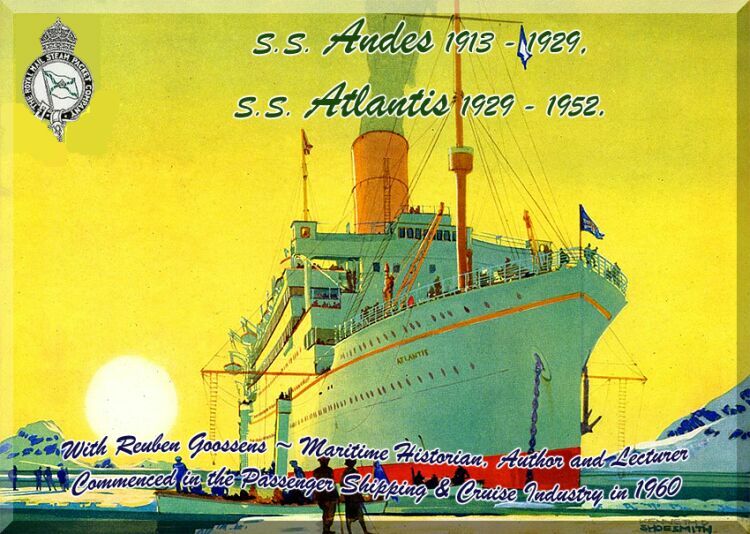
She is seen here as the “Atlantis” the Cruise Ship post 1929
The fine art-work is by Kenneth Shoesmith I am told, and this work,
and others were sent to me, with thanks by Phelim Ceallaigh
(
Please Note: Postcards, photographs & other images are either from the author’s private collection or from my supporters.
Thus thank very much too all my wonderful ssmaritime supporters for sending some of their wonderful
photographs for I could not have not have completed this feature to my satisfaction.
I am sorry but some of the images shown may not be of the highest quality, but they are the best that were available
Page One
Brief Introduction:
I am positive that the “Royal Mail
Line” (‘RML’) liner the “
Of course most will remember the R.M.S. Andes of 1939, which entered straight into WW2, and she was a troopship from 1939-1945. The then operated as a liner with a black hull and it was only in 1959, she was converted to a luxury all white cruise ship without any cargo whatsoever and she sailed unto 1971.
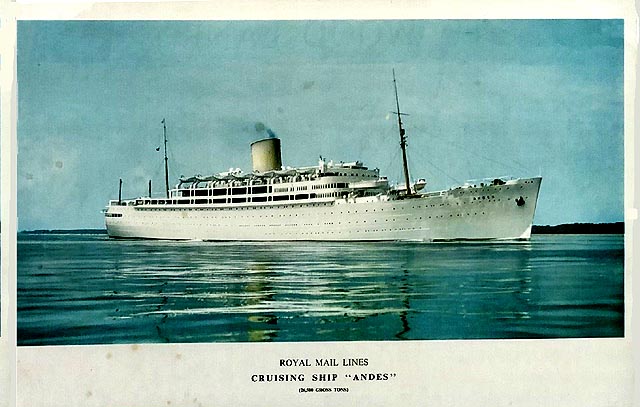
RMS Andes (2) Cruise ship completed in 1939 entered the war, then a liner
1959 refitted into a luxury Cruise Chip
Thus when people hear about a ship named the
“
The S.S. Andes was a ship of 15,620 gross tons
and her keel was laid at “Harland & Wolff’s”,
*********************
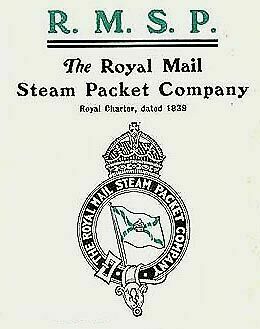
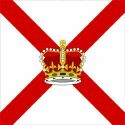
Above: The “Royal Mail Line” Logo and House Flag
Further details:
The “Andes”
was one of four ships built for ‘RML’ who operated an accelerated
service between the
The “
The “
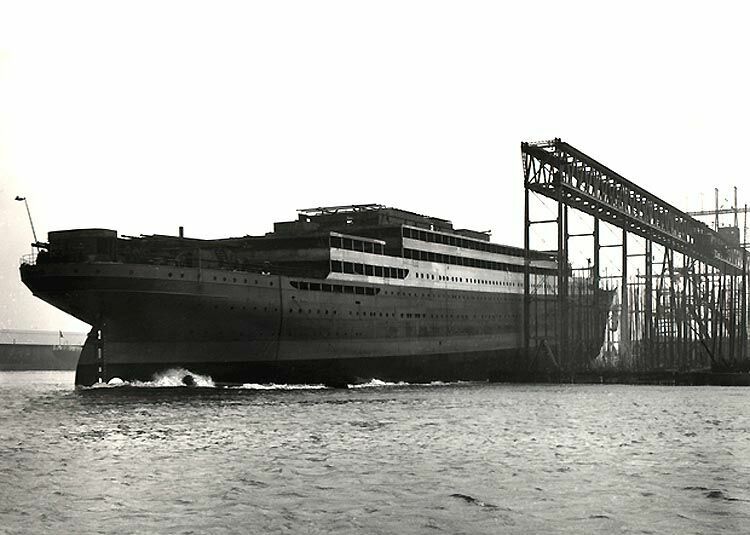
Her Launching on May 8, 1913
When finished she headed out for her Sea Trials, which was successful, and then a little later on September 11, 1913 she was delivered ‘RML’ at Belfast.
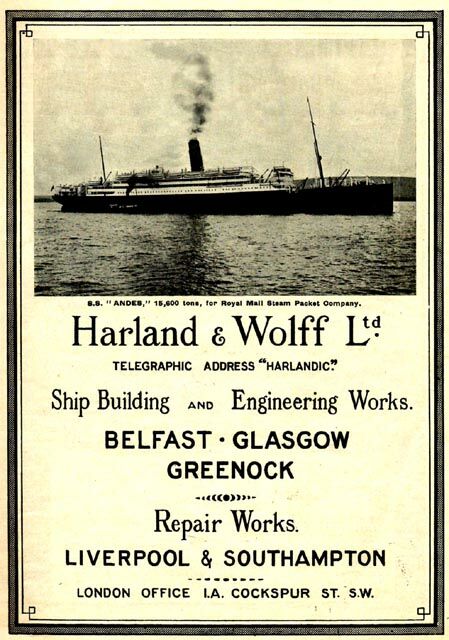
A Harland & Wolff Poster with a view of the completed S.S. Andes in early September 1913
It was quite traditional for passenger-cargo ship in those days to have their Bridge, and their Chart and Radio room, Captain’s Office, and his quarters as well as his major officer’s accommodations in this separate section from the main superstructure.
Her Maiden Voyage:
Having arrived at Belfast, she was made ready for her Maiden Voyage, with all cabins being made up to perfection, food loaded and stored in cool rooms and the right compartments to keep food and other items as fresh as possible. Bar needs were well stocked, and the new crew were well trained to ensure the guest’s would receive the best dinning experience and service possible!
On September 26, 1913 the
S.S. Andes departed
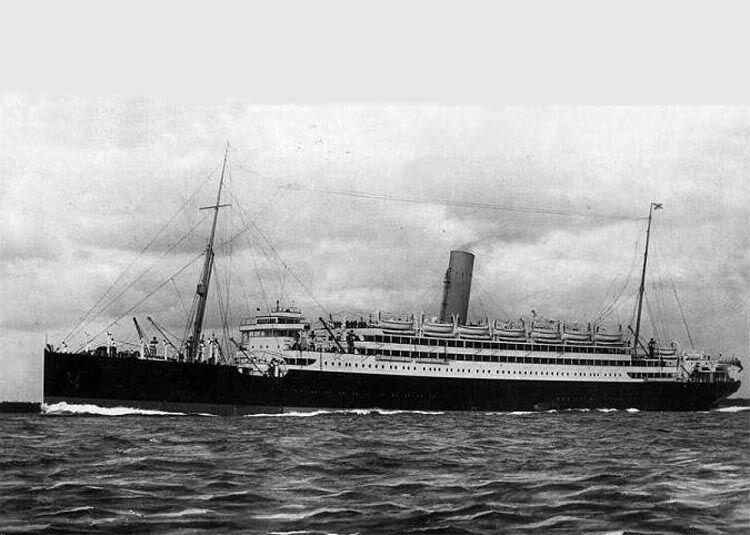
The new S.S. Andes is seen
during her maiden voyage to
Less than twelve months
after her entry into service, tragically the World War One broke out, but for
the first seven months the S.S. Andes continued her River Plate services from
Southampton, which was of course a vital trading area for the
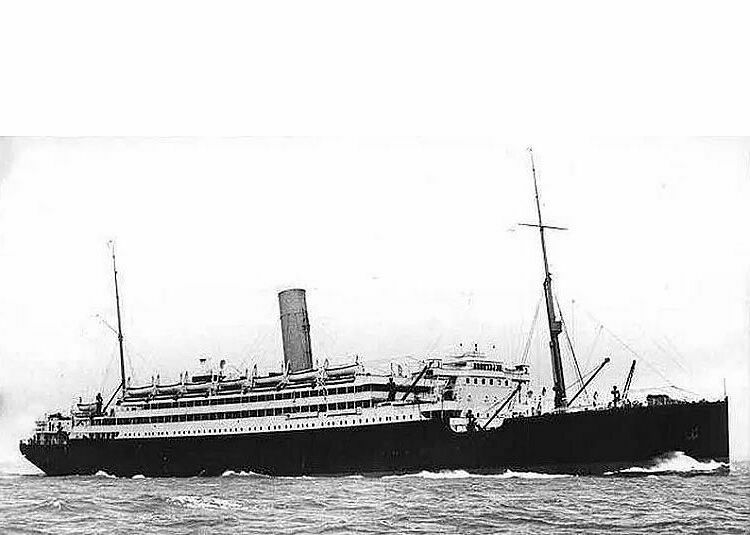
S.S. Andes is seen at full speed at sea
*********************
World War One:
However, in March 22, 1915
she was officially requisitioned by the Admiralty and sent north to
The H.M.S. Andes M.82 was commissioned into
the Royal Navy on April 22, 1915 and she was commanded by Commander C.W. Trousdale RN. She had a ship’s company of 340, three
of whom, including Commander Trousdale, were regular
RN officers. Most of her officers were RNR, and many of them had belonged to
her peacetime complement. It was May 26, 1915 before her refit was finished and
she was ready to leave
She had been armed with eight six-inch guns
and two six-pounders, as well as Maxim machine guns and
depth charges. Her hull, superstructure and funnel had been painted battleship
grey, and with four of her six-inch guns placed on the forecastle she looked
more like a warship than an ocean liner. Unfortunately, like all the converted
liners her high hull and superstructure made a very easy target, a fact which
was to send her sister, Alcantara, to the bottom of the Norwegian Sea.
Consisting of twenty-four converted warships, the 10th Cruiser Squadron was to
play a most important role in the economic blockade of
Exactly seven days after departing from the
Mersey on her first patrol, the “Andes” intercepted her first
neutral vessel when she stopped the S.S. Bretagne and sent her into
At about 9 am that day the lookouts on board
the “Alcantara” sighted smoke in a north-westerly direction and
almost simultaneously the “Andes” signalled, “Enemy in sight,
steering north-east.” There was some confusion over the exact position of
the mystery vessel, but at 9 am the “Alcantara” intercepted what
appeared to be a Norwegian cargo ship. The vessel was flying the Norwegian flag
at the stem and had the flag painted on her sides, as was the custom with
neutral shipping. The name Rena was painted on her bows and, in response to signals, she stated that she was on a new service to and
from
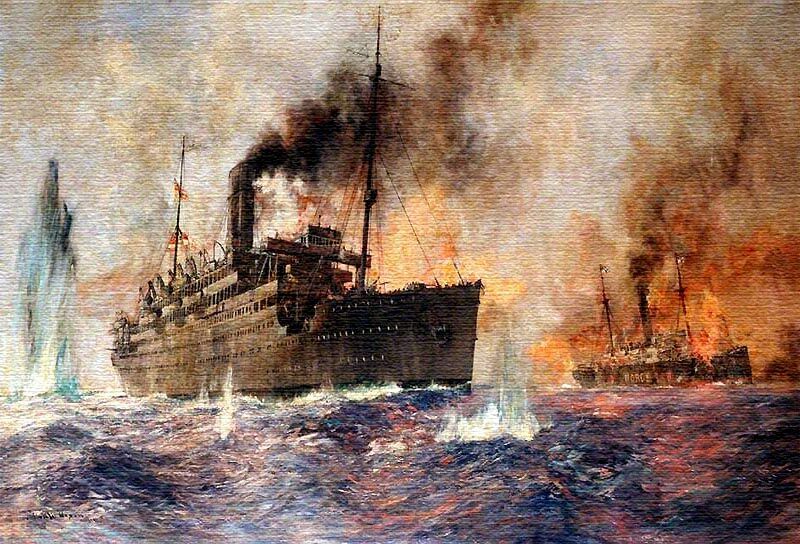
H.M.S.
but she was safe with her excellent ammunitions
By 3.37 pm that afternoon all the survivors
had been rescued and the ships were able to resume their patrol. Three days
later the “Andes” steamed into
Her wartime captains were as follows:
Commander Charles W. Trousdale; March 23, 1915 – December 9, 1915. (He left ship sporadically on sick leave).
Captain George B. W. Young; May 26, 1915 – June 15, 1918.
Acting Captain Cyril T. Hewlett-Cooper; June 15, 1918 – January 10, 1919.
For further details of her activies view: https://www.naval-history.net/OWShips-WW1-08-HMS_Andes.htm.
The S.S. Andes was paid off for re-conversion into a passenger liner once again.
*********************
Back to Civil duties:
In the spring of 1919 the S.S. Andes was back in the yards being refitted into being a passenger ship once again and repainted into the “Royal Mail Line’s” livery once again. Then on November 4, 1919, she returned to the South American trade for a full ten unbroken years, sailing her usual Southampton River Plate service which she was built for, but what was not known yet she would become a ship that would eventually sail the globe extensively later in her days!
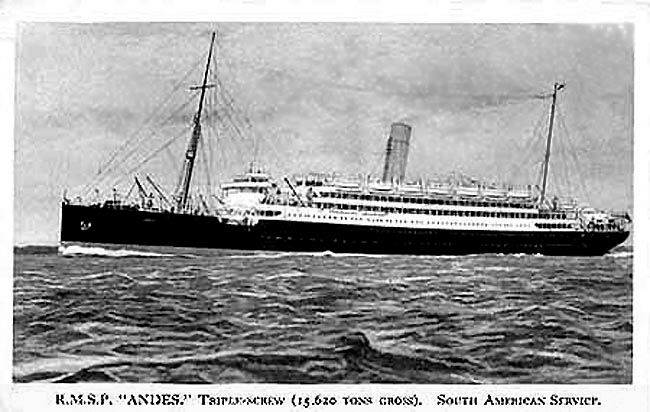
She is back on her old service for the next ten years
However, Royal Mail Lines late in 1929 it was
decided that the “Andes” would be converted for a completely new
service as it had been decided that she would make a great Cruise Ship, and
thus she went into dry-dock at
Her grand refit included her accommodation had been altered to carry just 450 First Class passengers only, and in keeping in with her new role, a new swimming pool had been built amidships up on the Boat (F) Deck. Also her hull was painted white with red boot topping and her single funnel was painted in an all buff colour. But more than all that, she had also been converted to burn oil fuel and what more, her name was changed to “Atlantis” and she was now registered at being 15,135 GRT.
*********************
S.S. Atlantis Interiors”
Sadly as you may well have noticed, I have not managed to find any images of the interiors of the “Andes” of 1913, (and frankly none of the Atlantis) but there are some pictures of her as the S.S. Atlantis the Cruise Ship thanks to a good friend I have not heard of for countless years. If we look closely at the public lounges etc, and even the cabins, we will note that much of it hails back to her origins, thus it will show something of her earlier days.
Strangely enough they changed her entire deck layout, It is usually Boat Deck, Promenade Deck, Lower Promenade Deck, A to C Deck, etc, or whatever Deck. But On the “Atlantis” they turned it upside down the top deck was F Deck, and from there it went down to A Deck, which was most unusual!
Please Note: All Interior images where kindly provided by old time ssMaritime supporter; Liam Barker (UK) –Many thanks for your ongoing support!!
F Deck:
Of course on most ships this deck would have
been called Boat Deck. This deck had two Main Passenger facilities, 1. The
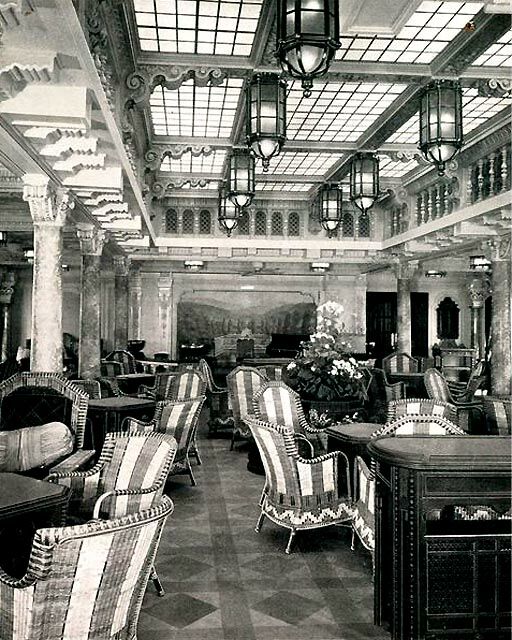
The magnificent Wintergarden located on this deck
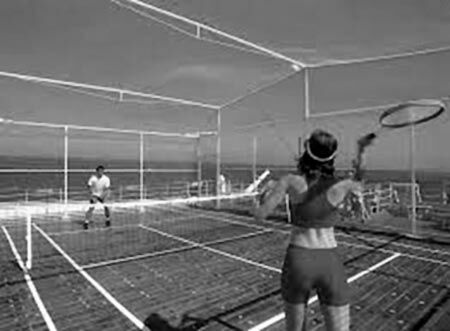
I have to admit this is not the actual tennis court on the “Atlantis”
as I actually chose it for it is only a guide of what it would have looked like in general
E Deck:
This deck featured a wide and a spacious Promenade Deck. The forward part was fully glazed in, and partly along the sides. The promenade deck was 500 ft long. Aft there was a bridge over to the aft section which contained the Games Deck. But the Promenade did have shuffle board games painted on the deck, and here would be other game played.
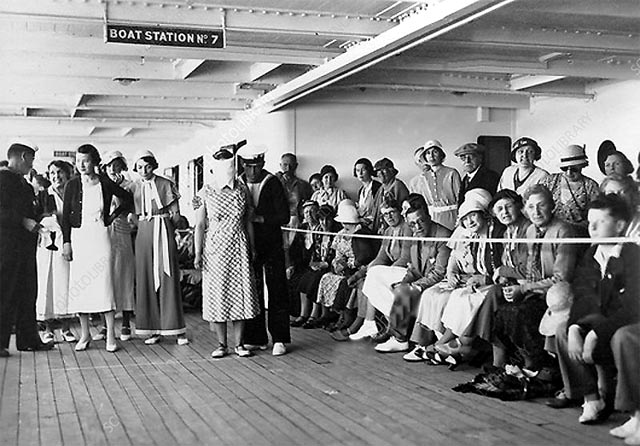
Here we see some of the crew playing a special game with the Ladies on board
Far forward inside was the magnificent main Lounge, with inlaid fine timber floors overlaid the finest Persian carpets. The room’s décor was at its finest the ceiling alone was simply stunning and the magnificent hanging glazed lights were simply out of this world. Aft of the room was a Stage for the ships band and there was a Grand Piano and space would be made for dancing.
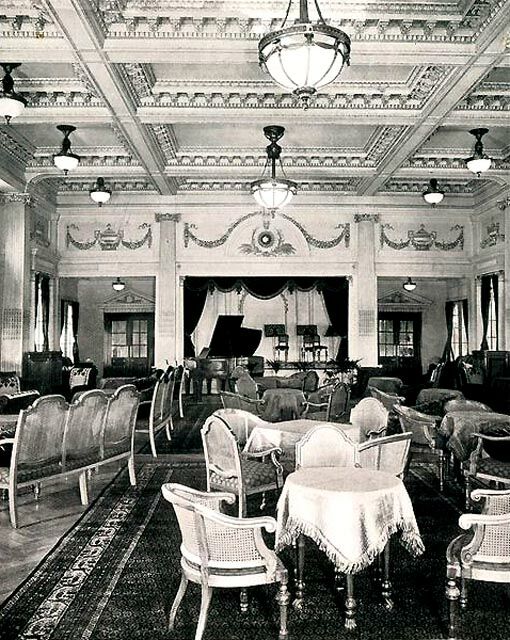
The Main Lounge forward on E - Promenade Deck
Aft of the Lounge was a spacious Lobby and a large Staircase going down. There were doors out to the Deck. Amid to aft of the ship were seven outside cabins and four inside cabins, being mostly singles and some two berth cabins.
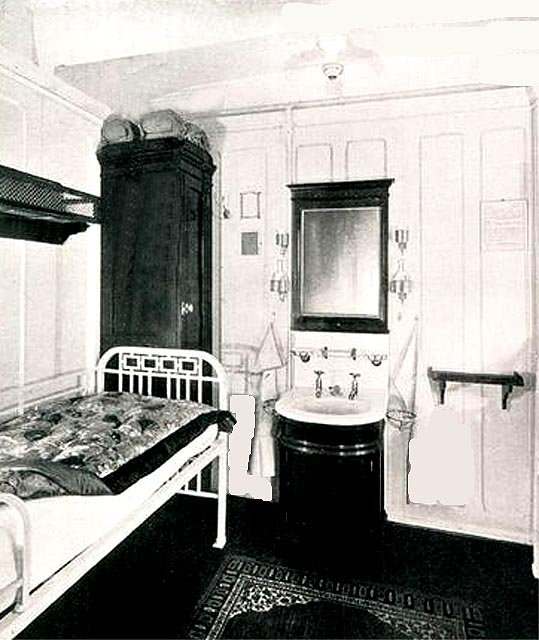
A Single berth Cabin without a private bath on this Deck
However, far aft of these cabins was the Smoking Room which is typically clad in dark timbers, with four dark carved column’s holding up the wonderful decorative ceiling which centrally domed with another wonderful light fitting. The doors forward go to the cabins, and in the centre is the stairwell down. Doors aft go to the Terrace. On each side of the terrace are stairs going up to F Deck.
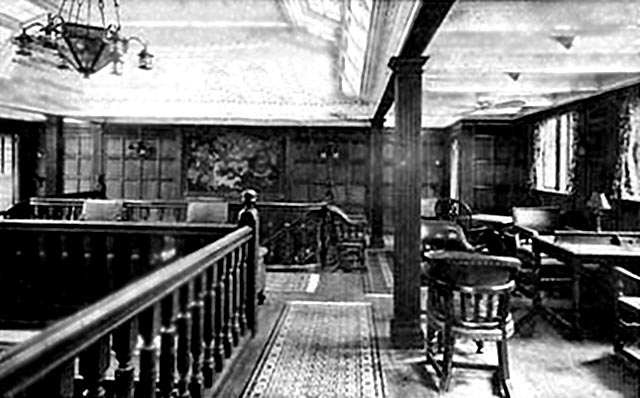
The Smoking Room
D Deck:
Again this deck was fully covered and was also a good promenade deck, but generally not as busy as the one above which was more popular.
Although this Deck like the one above also was a covered Promenade Deck although being somewhat shorter at 350 ft long, but the uncovered section went on; 1. There was one new and a very popular feature to the Cruise Ship, and that is the new outdoor Swimming Pool located between the passenger superstructure and the Bridge and Officers superstructure forward, although this pool was relatively small, compared to the indoor pool it was a wonderful and very popular location. 2. In addition the covered deck, this deck also continued uncovered right up to the stern where there was the children’s play room which was a fine facility.
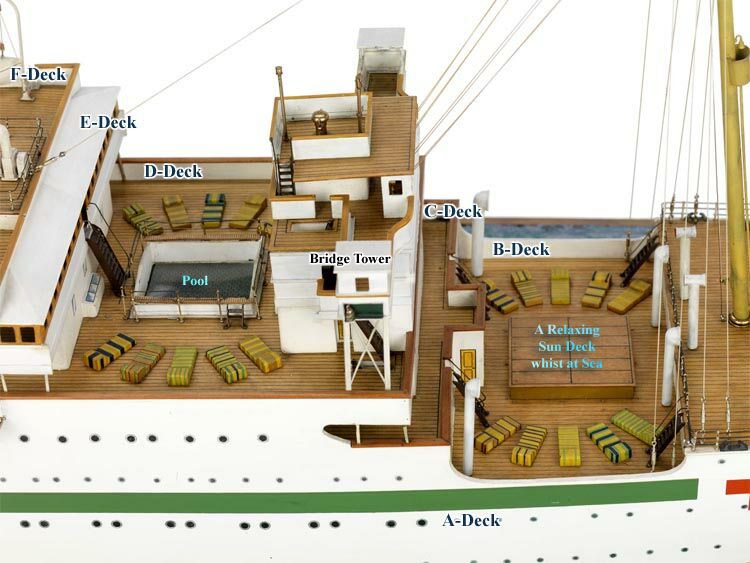
This is not only a good and the only available view of this Pool
But it now also shows all of the ships 6 Deck locations
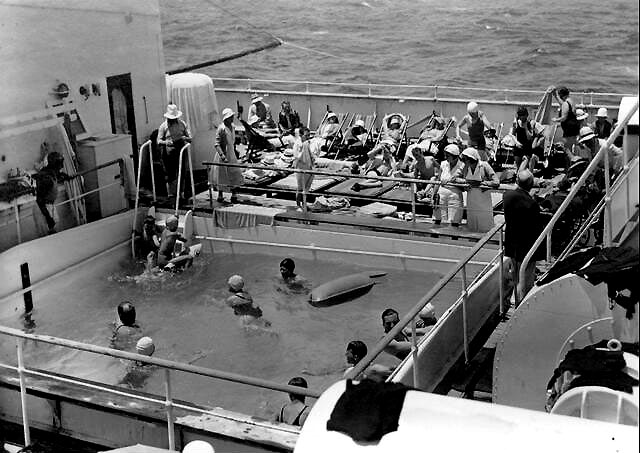
Here is an actual view of the forward Pool on D Deck
Internally this deck obviously there were many cabins, both single bed and twin bedded cabins most do not have private facilities.
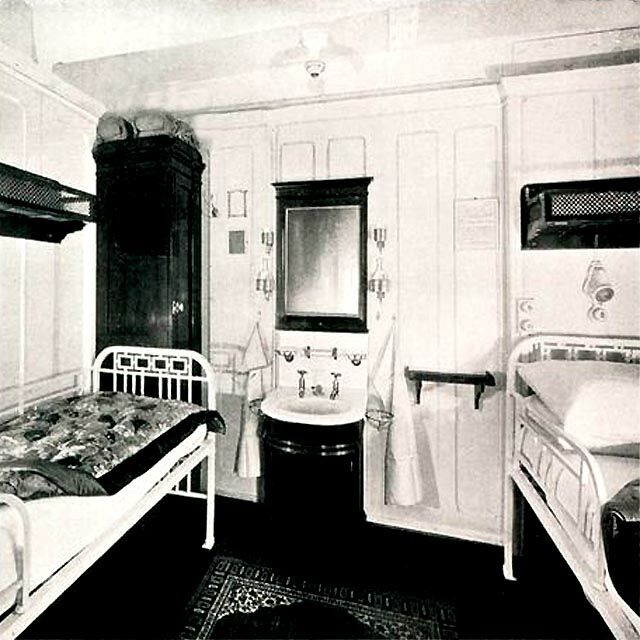
An outside two bedded cabin without a bathroom on D deck.
But here also there are shops at the forward lobby, and beauty parlours and men’s hair dressers, etc.
C Deck:
This deck offers a range of far superior and larger cabins including multi room deluxe Suites. These suites have private entrances a lounge, dining room, bed room, a hallway and a spacious bathroom with every possible facility, as well as a trunk room.
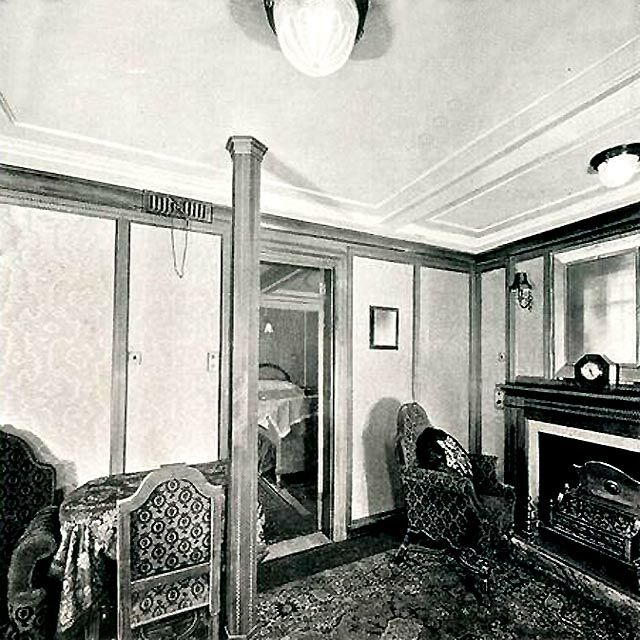
The deluxe Suites available on C & B Decks
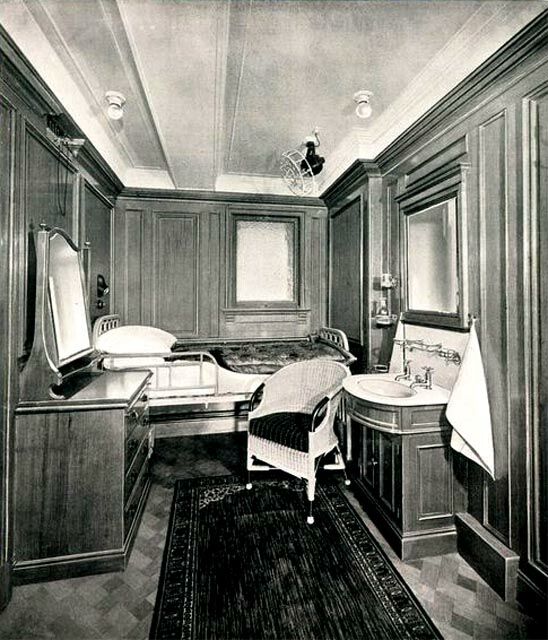
This is a deluxe Single Stateroom on C & B Decks
Far aft of this deck in a smaller separate superstructure, was a very spacious Gym with instructors with special sessions or private sessions available if desired by the guests. There was a host of equipment to suit everyone.
Just for interest aft of the Main passenger superstructure situated in the middle of the ship (side to side) was the doctors Surgery and his Waiting rooms, etc. the ship even had an operating room for any emergency. At the forward Lobby you would also find the Pursers Office.
B Deck:
This deck was the official Boarding Deck. All this happened at the forward Lobby and the double steel hull doors would open wide and the new guests would board with great anticipation of their new experience of a wonderful ocean holiday! Obviously this was the grandest of all the Lobbies on the ship with finest furnishings and decor.
Apart from that this deck had very same spacious deluxe staterooms and suites as the deck above, with almost all having a private bathroom, except several smaller rooms far forward.
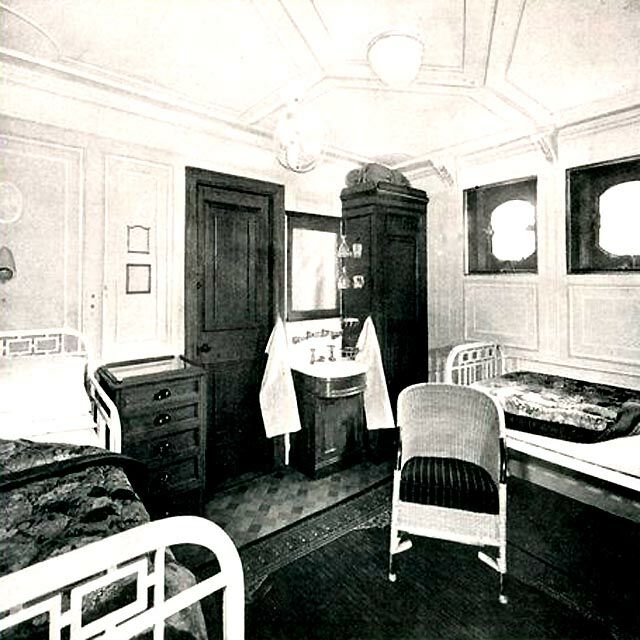
A Two Berth Cabin with a private bath
A Deck:
Starting from forward we located the ships Dining Room which is reached via the main forward staircase.
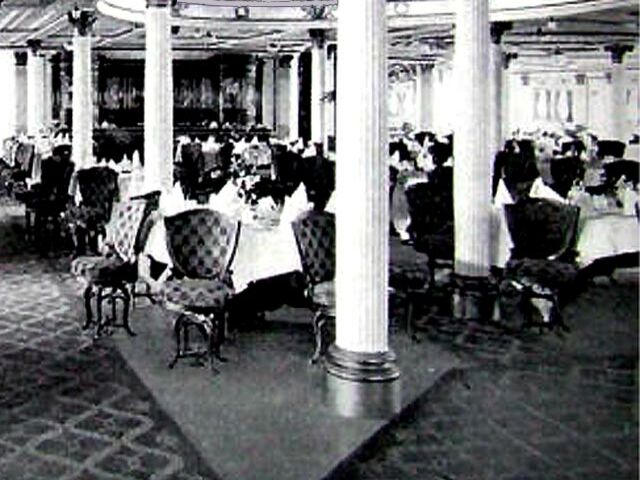
This is the Dining Room that looks very traditional and elegant
Lower Deck:
As far as I am aware the ship had an indoor pool, and all I know that it was on a lower deck forward somewhere near the Dining Room region.
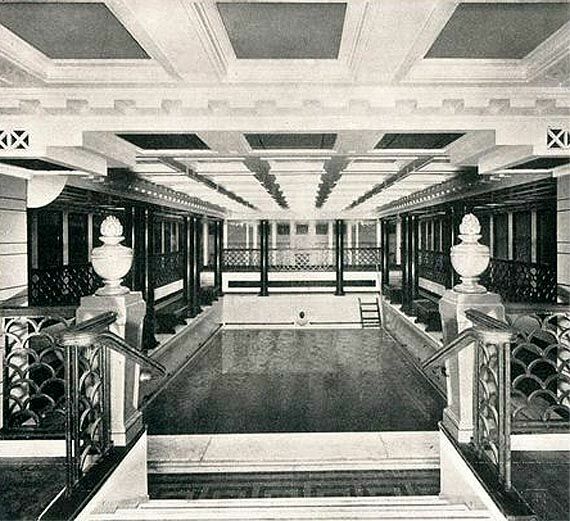
This would have been the same pool that was installed on the S.S. Andes in 1913
*********************
Cruising from Southampton
as Atlantis:
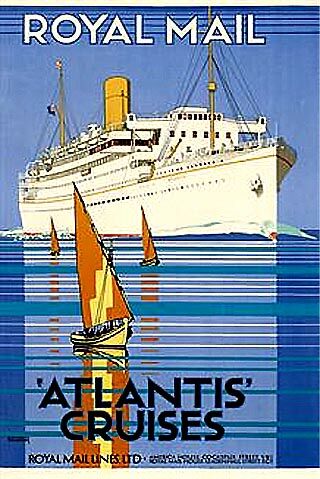
Pre departure promotional “Atlantis” Cruise Promotional Poster
From early 1930, the “Atlantis”
was based mainly at Southampton being her home for her cruise duties, although
she also sailed occasionally from
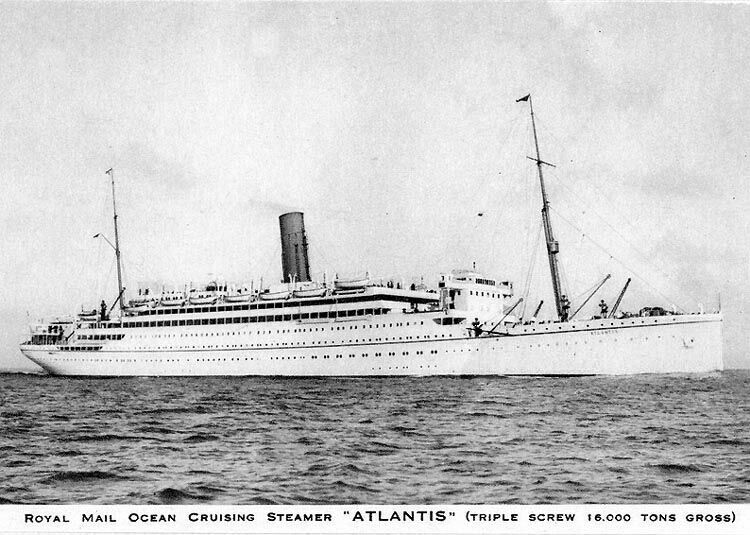
This an early release Royal Mail Line Postcard of the fine looking S.S. Atlantis their new Cruise Ship
She cruised to the Mediterranean, the Norwegian
Fjords and the Northern Capitals, as well as to the West Indies, South America
and to the
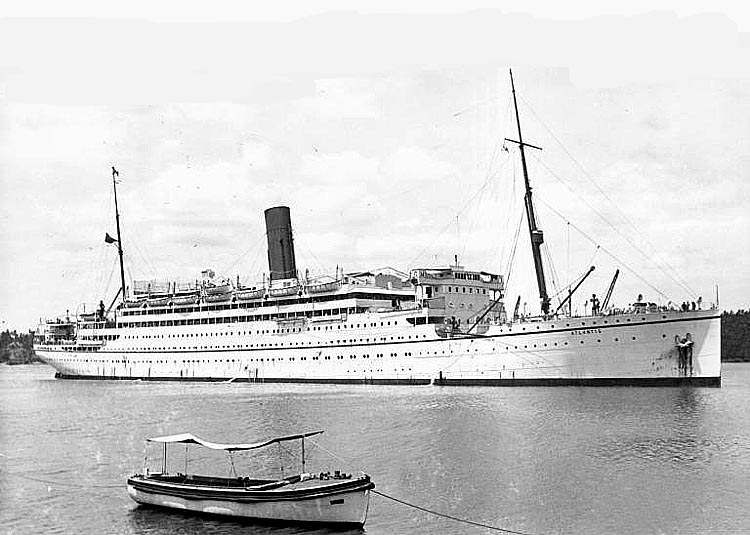
A delightful looking white Cruise Ships, the SS Atlantis was proving a huge success
Photo
provided by Liam Barker (
On completion of the much loved Norwegian
Fjords cruises, she would return to Tilbury sailing leisurely back to
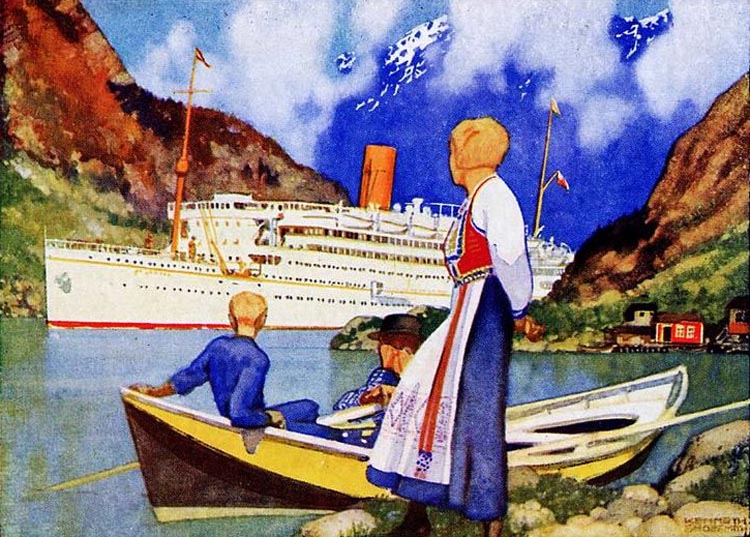
A delightful piece of artwork of the S.S. Atlantis at anchor in a Norwegian Fjord
The fine art-work is by Kenneth Shoesmith I am told, as this work was
sent
to me with thanks by
Phelim Ceallaigh (
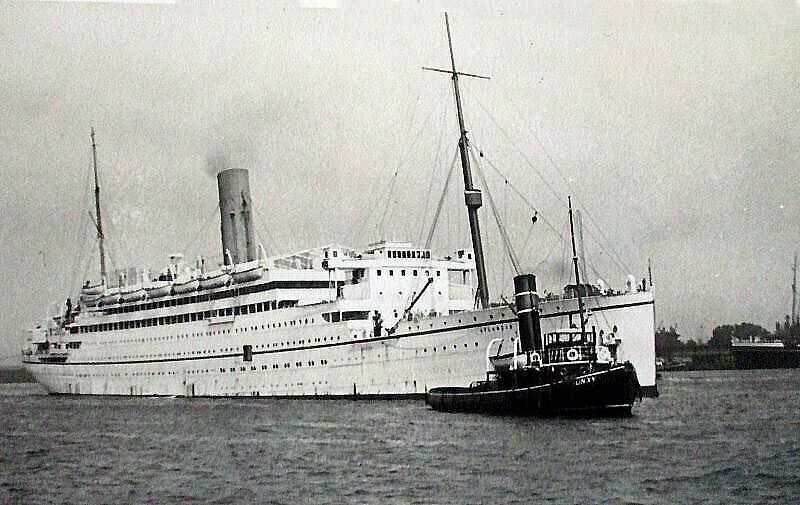
S.S. Atlantis arrives at Tilbury on July 19, 1935
After disembarking her passengers at Tilbury she would embark a new very special group of passengers. I will explain why.
In the summer of 1935 the
“Atlantis” made a special cruise to coincide with the “King
George V’s Silver Jubilee Naval Review” just off
After disembarking her very happy passengers
and a little after the ship had been made passenger ready a whole new group
boarded her for a very special departure, she sailed that day for the
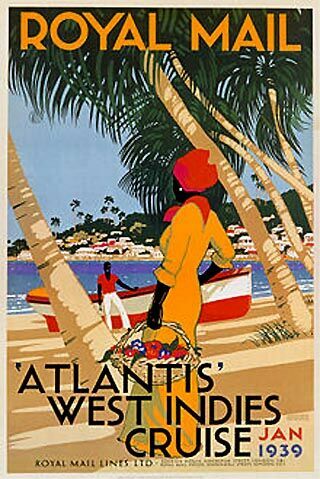
The ‘Royal
Mail Line’ Poster publicising “Atlantic’s”
Trouble in German Waters:
Four years later, when war clouds were once
more looming over
*********************
Second World War Hospital
The Atlantis’ role in the Second World
War was very different from her function in the previous war, and she was sent
to
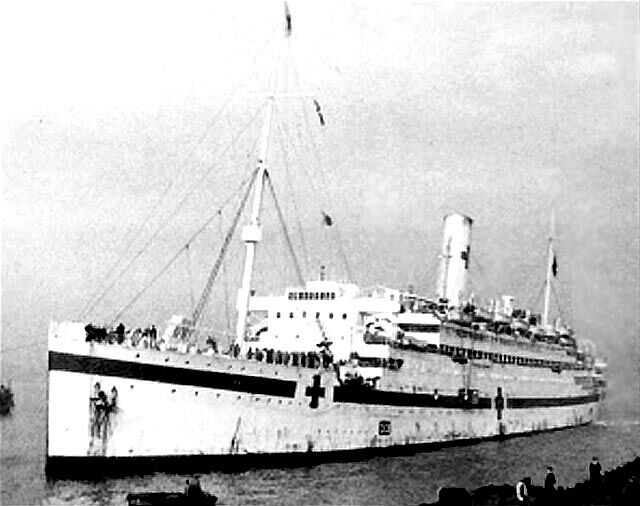
Thank you James Francis for sending this photograph!
The Model was made by one of her Sailors and it can
be seen at
the
This
photograph was provided with great thanks by Phelim Ceallaigh (
In the spring of 1940 she was back in European
waters for the brief campaign in
During the summer of 1940 all fighting on the
mainland of Europe ceased and the “Atlantis” moved back to the
Middle East for a campaign which started with the Italian invasion of
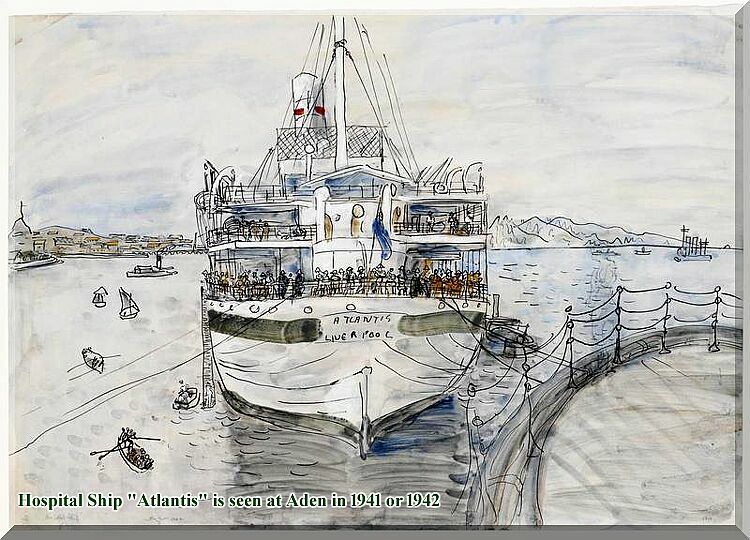
Atlantis in
Thanks
Abdul Rasheed for this delightful colourful drawing (
Sadly the artist is unknown
Seventeen months later she was back in
Over the next two days the exchange of
personnel was completed and all the ships, both British and German, left
Gothenburg at dawn on October 21. It turned out that negotiations had been
going on for two years and, despite the early leaking of the news, they were
successfully completed. All the prisoners were sick or wounded and many of them
were disabled. Amongst the men aboard the “Atlantis” were seventeen
H.M.H.S. Atlantis (33) mercy mission ended in
The ship’s new voyage took her back to
the Middle East and to
Her Hospital Livery was removed and in 1946
she headed off to
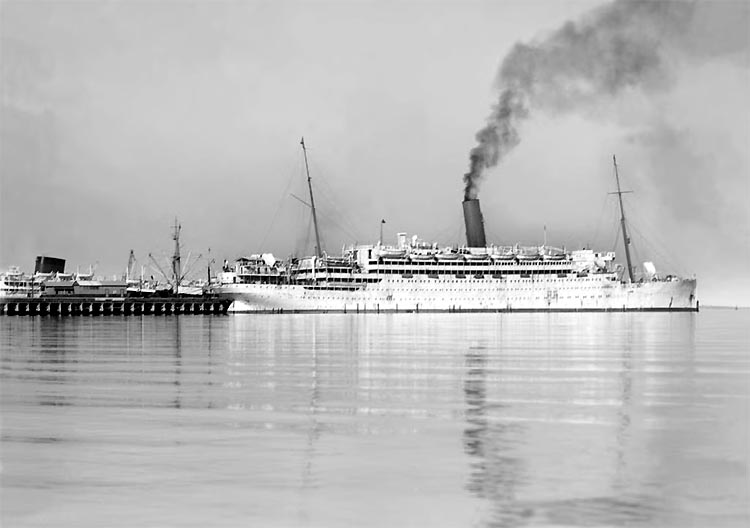
The
“Atlantis seen in
And we also a part
of the
Thank you Peter (AU)
Following the end of the Second World War, the “Atlantis” remained in her role of hospital ship but in November 1946 she was sold outright to the government.
The high cost of conversion work for such an
elderly ship had obviously influenced the decision to keep her in government
service, and she remained managed by the ‘Royal Mail Line’. For the
next twelve months the “Atlantis” continued to carry invalid
servicemen, including many from military hospitals in
*********************
S.S. Atlantis the Emigrant Ship:
However, early in 1948 she was chartered by
the
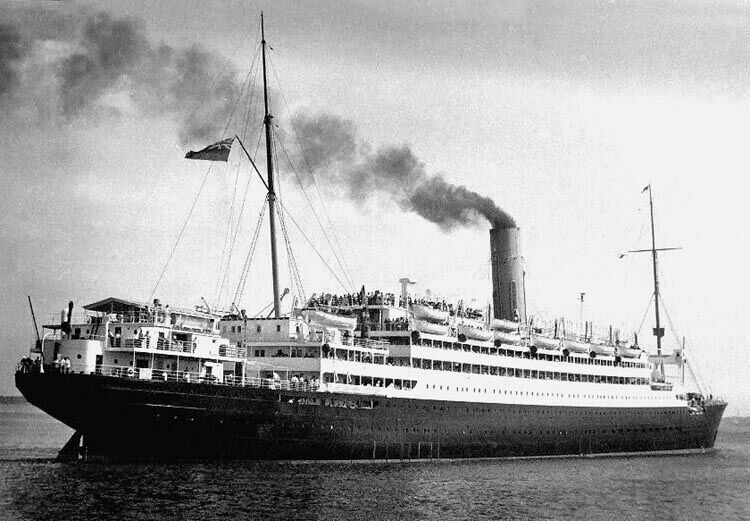
A photo taken of
her the day before arriving in
Photograph was kindly provided by James Franks of Palmerston North where I lived for a while back in 1958-59
I have not heard from you for years my friend, many thanks!
On a homeward voyage in 1950’s she
transported Dutch families of the Royal Netherlands Army from newly-independent
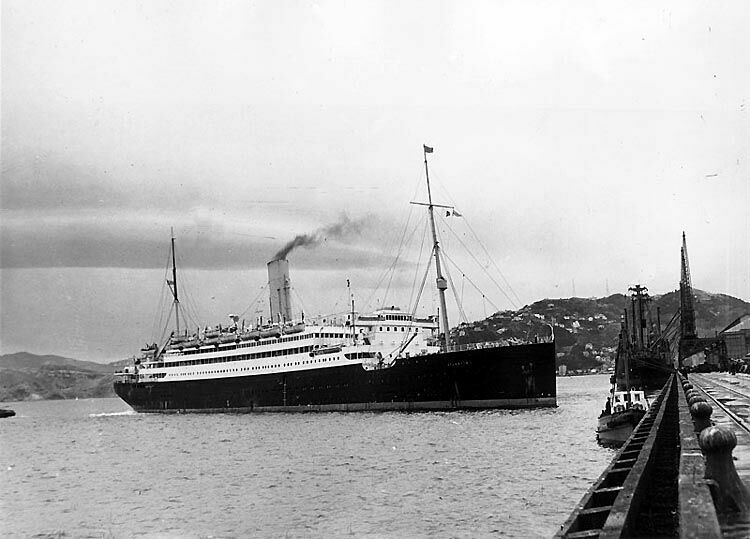
The “Atlantis” arrives at Wellington Harbour of New Zealand in 1951
Provided by my friend James Franks, thanks mate!
Just over twelve months later, in November
1951, Atlantis was repatriating British servicemen’s families from the
Suez Canal Zone, as outbreaks of violence forced the government to evacuate the
wives and children and move the troops into heavily guarded perimeters in the Ismailiya area. She arrived in Southampton at the end of a
voyage from
After nearly thirty-nine years of faithful operation,
her old machinery had slowly worn out, and following her return to the
In March 1952, she was towed to Faslane where she was duly broken up after 39 years at sea having had to work so very hard for so long.
*Below I will reveal in short the many services she operated in during her 39 year’s:
1.
1913 to 1915 - The River Plate Service - “
2. 1915 to 1918 - Armed Merchant Cruiser “ .
3. 1918 to 1929 - The River Plate Service “ .
4. 1929 to 1939 - Refitted into a Cruise Ship & renamed - “Atlantis”.
5. 1939 to 1946 - Hospital Ship “ .
6.
1948 to 1952 -
7.
1952 she was sold to be scrapped in
*********************
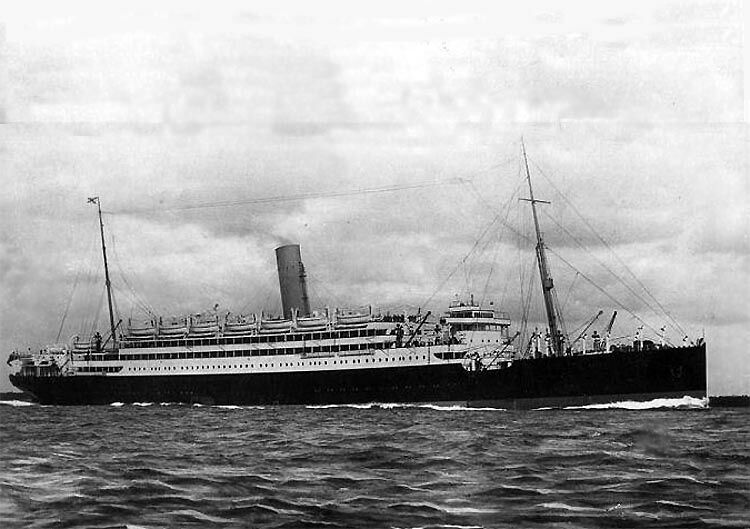
A fine ship that had two names S.S. Andes & S.S. Atlantis and six very different services
Specifications & Details of the “Andes ” & “Atlantis”:
Usually the extensive list of Specifications and other important Details would be located here, but as this is a large page I have decide to place it on Page Two which will provide maritime and other ship enthusiasts a great deal of information on this Grand Old Dame of the Sea, she will always be remembered as having been a rather special ship, as she was so greatly loved by so many!
*********************
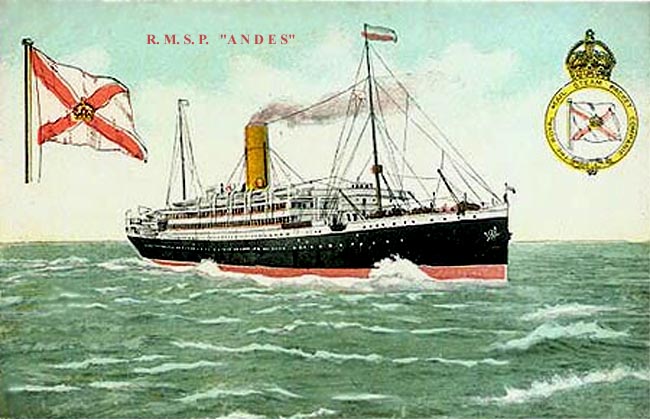
A delightful
artist impression of the ‘Royal Mail Line’ Postcard of the “
In conclusion: During her 39 year career the S.S. Andes / S.S. Atlantis had operated uninterrupted services as an Express Liner, an Armed Cruiser, a Luxury Cruise Ship, a Hospital Ship, and a Troop and an Emigrant carrier. Now that is surely a great record for just one old ship, for she has certainly served her owners well.
Remembering the Delightfull …
S.S. Andes & later the S.S. Atlantis
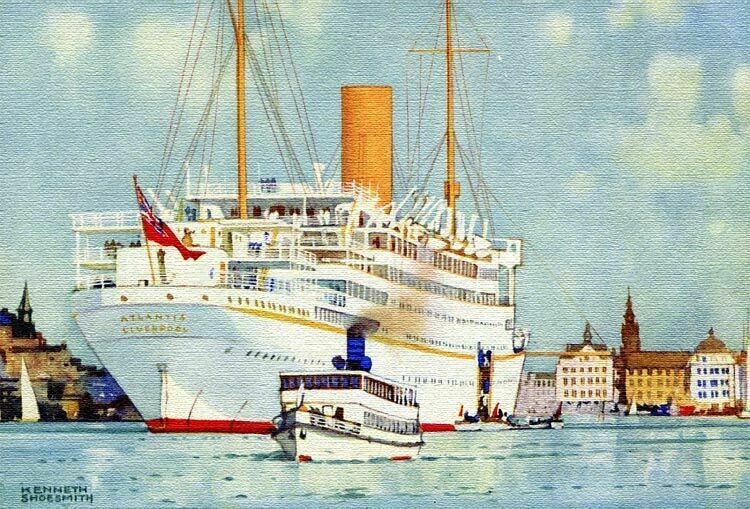
There is no doubt about it she never looked better with her stunning white cruise livery!
She is seen here
at
The fine art-work is by Kenneth Shoesmith I am told, as this work was
sent
to me by with thanks by
Phelim Ceallaigh (
Enter S.S.
This Page has a Deck Plan of the S.S. Andes, an ‘Atlantis Menu from 1936
As well as various souvenirs from the ship!
*********************
“Blue Water Liners sailing
to the distant shores.
I watched them come, I watched them go and I
watched them die.”
Featuring well over 1,550 Classic Passenger Liners, Passenger-Cargo Liners & Classic Cruise Ships!
Or ENTER HERE
Amazingly; ssmaritime.com has received 7.57 billion visitors to date
Last update: January 24, 1922
For interest: Sadly an email service to ssMaritime is no longer available, due to the author’s old age and chronic illness as well as being disabled, etc. In the past ssMaritime received well over 120 emails per day, but Mr. Goossens can no longer handle same. He sincerely regrets this!
*********************
ssMaritime.com & ssMaritime.net - (no longer online).
Where the ships of the past make history & the 1914 built M.S. Doulos Story.
The Author has been in Passenger Shipping & the Cruise Industry for well over 60 years
In addition he was the founder of “Save the Classic Liners Campaign” in 1990.
Please Note: ssmaritime and associated sites are 100% non-commercial and the author seeks no funding or favours of any shape or form, never have and never will!
Photographs on ssmaritime and associate pages are by; the author or from the author’s private collection. In addition there are some images that have been provided by Shipping Companies and private photographers or collectors. Credit is given to all contributors. However, there are some photographs provided to me without details regarding the photographer/owner concerned.
This notice covers all pages; although, and I have done my best to ensure that all photographs are duly credited and that this notice is displaced on each page, that is, when a page is updated!
ssMaritime is owned & © Copyright by Reuben Goossens - All Rights Reserved

